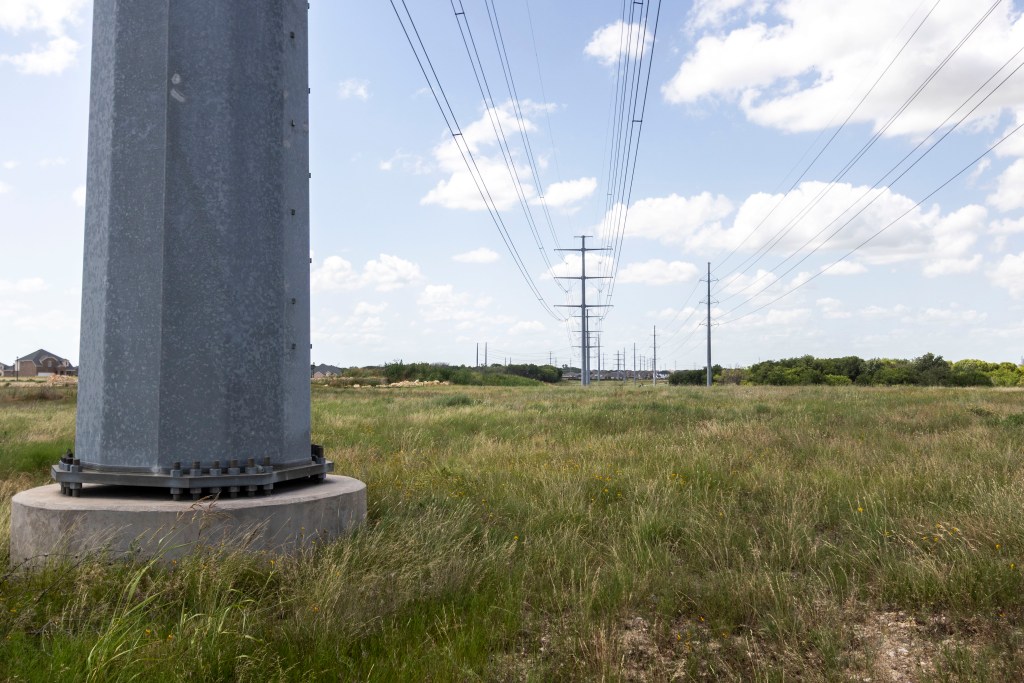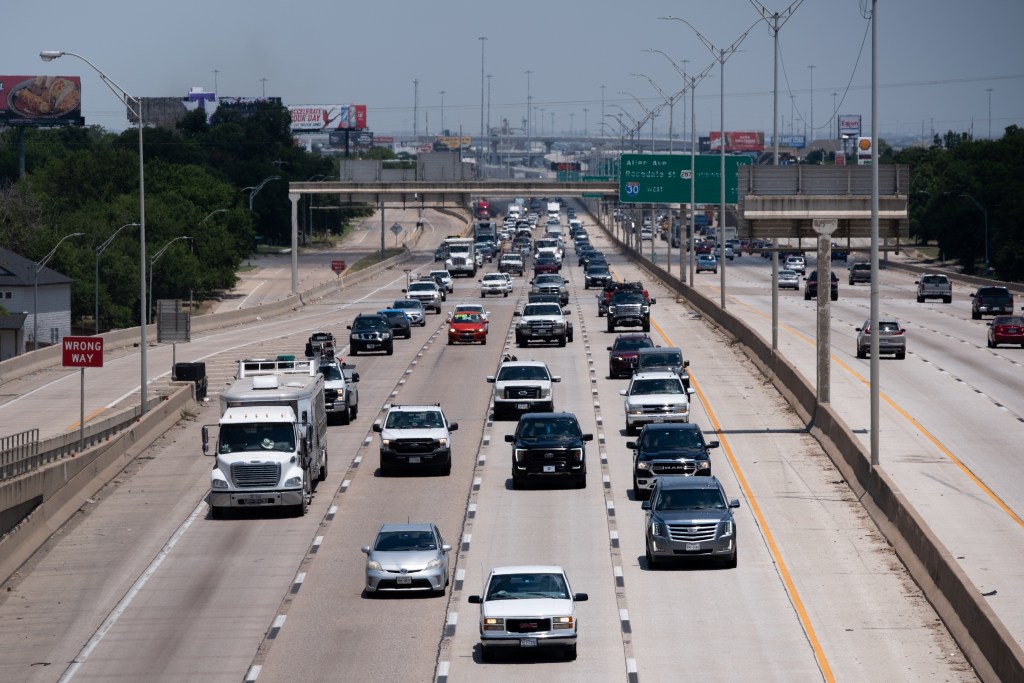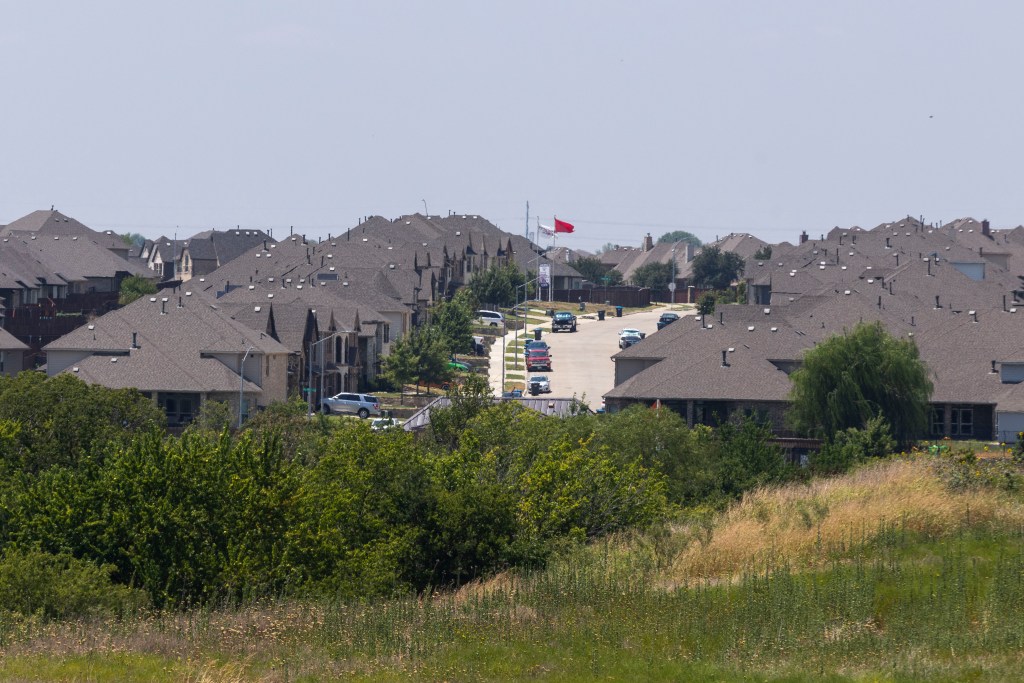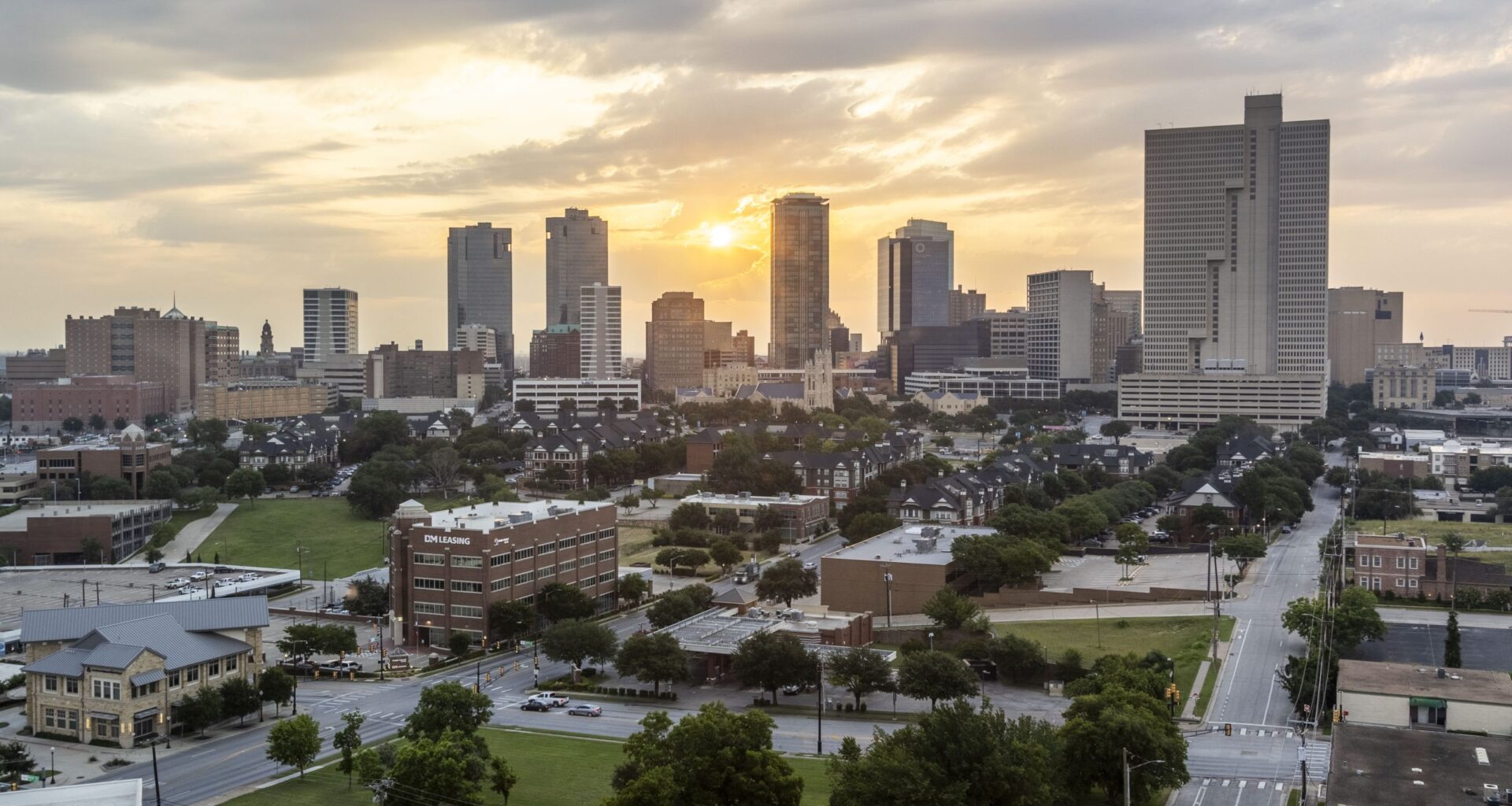For 63 years, Wanda Conlin witnessed the rise of Fort Worth from the scenic open space behind her West Meadowbrook neighborhood. From that hilltop view, she’s seen shiny skyscrapers multiply downtown as the city grew from its Western roots into an era embracing artificial intelligence and data centers.

This is the first story in the Report’s special 1 Million & Counting growth series, which will be published on Mondays into October. The reporting will lead to a growth summit Oct. 23 at the downtown Tarrant County College Trinity River Campus.
This year Fort Worth became the nation’s 11th-largest city, with more than 1 million residents and projections estimating it will add another 400,000 people by 2050. The population growth will have a dramatic, sweeping impact on the city as it works to maintain services as dense housing developments boom. At the same time, sprawl will affect traffic congestion, water usage and more.
That means city and community leaders must tackle the challenges of growing pains to meet residents’ needs: more housing, more roads, more water, more jobs.
The Fort Worth Report is launching a series examining what challenges and opportunities the city faces on these issues and others as continued growth puts North Texas on track to add another 4 million more residents in the coming decades.
A first step is the city’s 2026 bond program, which is expected to include $840 million in city infrastructure projects.
Conlin, who’s served on Fort Worth’s zoning and city plan commissions, understands the need for housing, retail and mixed-use projects to accompany the city’s boom. But, like many residents, she worries about accompanying issues such as density, the environment and resources
“We’re growing too fast,” the 96-year-old said. “We can’t keep up with the infrastructure. We’re going to have to fix water issues.”
Managing water woes and resources
Water demand for North Texas is a lingering challenge for regional planners.
Planners say that even if water conservation and reuse strategies help save more than 1 million acre-feet, the region is still left with a deficit of 1 million acre-feet per year.
Scarce water resources threatened to hamper development in once-rural areas such as the Alliance area, which now bustles with aviation, rail and technology hubs. Those businesses, along with new housing developments, retail stores and restaurants, helped stretch the city into southern Denton County and contributed to an economic impact of more than $10.2 billion.
Conlin said she often warned about such dense growth in the Alliance area when she was on the plan commission.
“The reason that didn’t develop before was because there’s no water up there,” she said. “I kept harping about water. … Now they’re finding out they’re draining aquifers.”
Hillwood worked through water issues by founding Independence Water, a system that uses harvested rainwater stored in ponds and water treatment plant reuse for its AllianceTexas customers and nearby municipalities. The program continues to grow, which aids data centers and other high-usage customers, according to Hillwood’s website.
Curtailing water and electricity needs could aid in alleviating strain on Texas’ power grid, as the state has experienced issues during heavy-usage events, such as the 2021 winter storm.
North Texas officials hope the controversial Marvin Nichols reservoir could eventually supply water to millions of residents.
An agreement was reached in August to push back the completion date of the reservoir to 2070. Landowners are upset that the project proposes to inundate more than 66,000 acres in Red River, Franklin and Titus counties.
Another project, the Marty Leonard wetlands, could bring an additional 156 million gallons of water to 11 North Texas counties. Construction is set to begin in 2028 with a 2032 completion date, according to the Tarrant Regional Water District.
Zach Huff, water resources engineering director for the Tarrant Regional Water District, said the agency is planning ahead so water needs don’t become a constraint.
Business development
Despite the velocity of growth, vast tracts of land remain undeveloped in Fort Worth, hundreds of acres that city and community leaders hope entices more business relocations.
 Telephone poles stand in open fields June 20, 2025, off of West Bonds Ranch Road in Fort Worth. (Mary Abby Goss | Fort Worth Report)
Telephone poles stand in open fields June 20, 2025, off of West Bonds Ranch Road in Fort Worth. (Mary Abby Goss | Fort Worth Report)
Robert Allen, president and CEO of the Fort Worth Economic Development Partnership, said the city’s unique combination of a strong business climate, developable land, a talented workforce and can-do spirit makes Fort Worth desirable to companies.
“We’re working hard to bring economic development to Fort Worth,” he said. “The people here make all the difference.”
Recent examples of such momentum include the city’s new designation as the aviation and defense capital of Texas.
The city is home to Naval Air Station Joint Reserve Base Fort Worth where the F-35 stealth fighter jet is assembled by Lockheed Martin Aeronautics workers. Meanwhile, Bell, a Textron subsidiary, announced this winter that it’s building a $600 million-plus plant for the U.S. Army’s Future Long Range Assault Aircraft.
Film and television productions, health care, energy and transportation are key industries aiding in growth, Allen said.
Fort Worth’s burgeoning film and television production industry will see a boost with the largest production studio in the state. Taylor Sheridan, who created the hit “Yellowstone” and “Landman” TV shows, partnered with Hillwood and Paramount Television to bring large-scale productions to a 450,000-square-foot facility in the AllianceTexas development.
To meet the needs of a growing population, Fort Worth’s major health systems are expanding with new buildings and services. Projects for Baylor Scott & White Health, Cook Children’s Health Care System, JPS Health Network, Medical City Healthcare, Moncrief Cancer Institute and Texas Health Resources will add to the city’s medical capabilities as more residents move to the city.
Cook Children’s Medical Center, for example, is planning the largest expansion in its 107-year history with construction of a new 760,000-square-foot West Tower, a $1 billion project.
Meanwhile, JPS Health Network’s master facility plan is supported by an $800 million bond package voters approved in 2018. The plan details new facilities, including a medical home, psychiatric emergency center, medical outpatient building, pavilion expansion and a new hospital.
Business expansion will create more jobs and opportunities. In March, global technology giant Siemens opened its new $190 million electrical equipment manufacturing facility, which is expected to spur a total of 800 jobs to be created by 2026.
This summer, the city landed two Wistron plants, which will manufacture artificial intelligence chips, valued at $687 million and set to create 888 jobs.
Within two years, the Fort Worth Economic Development Partnership said it secured more than $2 billion in capital investment. That includes over 20 business relocations or expansions and the creation of at least 5,000 jobs.
Transportation challenges
Commuters face increasingly long commutes as Fort Worth, with more than 499,385 workers age 16 and older, ranked at No. 10 in Forbes “Hardest Commutes in the U.S.” study with an average time of 26.8 minutes.
In north Fort Worth, widening and improving roads to accommodate the thousands of residents moving into neighborhoods around the small town of Haslet is a constant worry for the area’s City Council member, Alan Blaylock.
“To be honest, that’s my main focus in my district,” he said.
 Drivers make their way down Interstate 35 near Fort Worth’s Morningside neighborhood July 12, 2024. (Camilo Diaz | Fort Worth Report)
Drivers make their way down Interstate 35 near Fort Worth’s Morningside neighborhood July 12, 2024. (Camilo Diaz | Fort Worth Report)
To accommodate growth, highway projects, such as the $174 million rebuilding of Interstate 820 eastern loop, are underway or planned. Trinity Metro officials want to expand its TEXRail passenger rail service into the Medical District, and an urban rail system emanating from downtown is proposed.
“As our region continues to grow over the next 25 years, a strong focus on infrastructure, travel reliability and mobility choices will be key to our city’s success and competitiveness,” Mayor Mattie Parker said.
She said the city of Fort Worth’s “Moving a Million” master plan as well as projects and partnerships with Texas Department of Transportation, North Central Texas Council of Governments, Trinity Metro and others “will be critical as we plan for historic growth throughout our city, region and state long into the future.”
Public transportation will play an increasingly important role in the city’s vibrant economic growth story, Trinity Metro President and CEO Rich Andreski said.
“With the abundant growth, we have data that shows the public is growing weary of traffic congestion and wants more rail options,” he said. “Trinity Metro is developing solutions to support the emerging Texas A&M Innovation District, link local neighborhoods and entertainment districts, and provide better regional transit connections. Urban rail, express bus services, automated vehicles and other innovative ideas are all on the table.”
Michael Morris, transportation director for the North Central Texas Council of Governments, is advocating for denser housing and more mixed-use developments in urban cores to ease traffic woes.
“The latest U.S. census data is further evidence of the need for a comprehensive transportation system that provides North Texans a choice of how to travel to work, school, medical appointments and important points of interest,” Morris said, adding that roads and transit operations should complement each other as regional officials advance their Transit 2.0 initiative.
Advancements in technology will lead to more autonomous vehicles on the road as well as new options such as flying taxis, which Fort Worth airport officials are planning for. Morris has advocated for a high-speed rail route from downtown Fort Worth and Arlington to connect with a Dallas-to-Houston route proposed by Texas Central Railway, led by Fort Worth investor John Kleinheinz.
Population growth
Rampant sprawl across North Texas will lead to a metro population of more than 12 million residents by 2050, according to projections from the North Central Texas Council of Governments.
Along with the strain on transportation is addressing housing, education and other necessities that impact residents’ quality of life.
The Fort Worth area needs about 40,000 housing units, economist Ray Perryman said at the 2025 Live Local Housing Summit. Those needs resulted from about 20 years of “perfect storms” that included the 2008 Great Recession and the 2020 COVID-19 pandemic.
The city’s 2026 bond program is expected to include $840 million in city infrastructure projects. Some advocates want affordable housing efforts included since Fort Worth is the largest city in Texas without a housing proposition in its bond.
 Houses border the wilderness Aug. 5, 2025, in northwest Fort Worth. (Mary Abby Goss | Fort Worth Report)
Houses border the wilderness Aug. 5, 2025, in northwest Fort Worth. (Mary Abby Goss | Fort Worth Report)
The city’s western side is also experiencing rapid growth.
Fort Worth’s neighbor, the Parker County city of Aledo, currently home to more than 5,800 residents, will be the population center of the Fort Worth-Dallas area by 2100, Parker has said. Growth in that area includes new housing developments, and the University of Texas at Arlington will build its UTA West campus on 51 acres near the merger of Interstates 30 and 20 by Aledo.
Jennifer Cowley, president of UTA, said the population increases in the area highlight new opportunities for higher education growth.
“Fort Worth will be the largest city in Parker County,” she said.
UTA is among college campuses expanding across the area as city leaders aim to meet the growing demand for a talented workforce. Nearby states are recruiting top students from Texas, leading to brain drain in the state, higher education officials said.
Addressing the workforce shortage and adding to the Fort Worth skyline is the new eight-story, $185 million Texas A&M-Fort Worth campus that will open in 2026. It will house the law school as well as various programs and state agencies associated with A&M.
 Business owner Wanda Conlin, 96, served on the Fort Worth Zoning Commission for 14 years and the City Plan Commission for nine years, including seven years as chair. From a scenic point near her east Fort Worth home, she’s seen the city stretch to hold 1 million residents. (Eric E. Garcia | Fort Worth Report)
Business owner Wanda Conlin, 96, served on the Fort Worth Zoning Commission for 14 years and the City Plan Commission for nine years, including seven years as chair. From a scenic point near her east Fort Worth home, she’s seen the city stretch to hold 1 million residents. (Eric E. Garcia | Fort Worth Report)
From her cinematic views at Scenery Hill in Meadowbrook, Conlin has been amazed by the evolving skyline and growth.
While her quiet, eastside neighborhood endures, she worries growth in the northern, western and southwestern sides has hampered other areas such as the declining East Lancaster Avenue corridor.
Conlin, who grew up during the Great Depression, said she believes Fort Worth’s growth is simply too rapid.
“I hope the city can solve these issues,” she said. “I hope they leave it a better place.”
Environment reporter Nicole Lopez contributed reporting.
Eric E. Garcia is a senior business reporter at the Fort Worth Report. Contact him at eric.garcia@fortworthreport.org.
Disclosure: Hillwood and the University of Texas at Arlington have been financial supporters of the Fort Worth Report. News decisions are made independently of our board members and financial supporters. Read more about our editorial independence policy here.
Related
Fort Worth Report is certified by the Journalism Trust Initiative for adhering to standards for ethical journalism.
Republish This Story
Republishing is free for noncommercial entities. Commercial entities are prohibited without a licensing agreement. Contact us for details.
